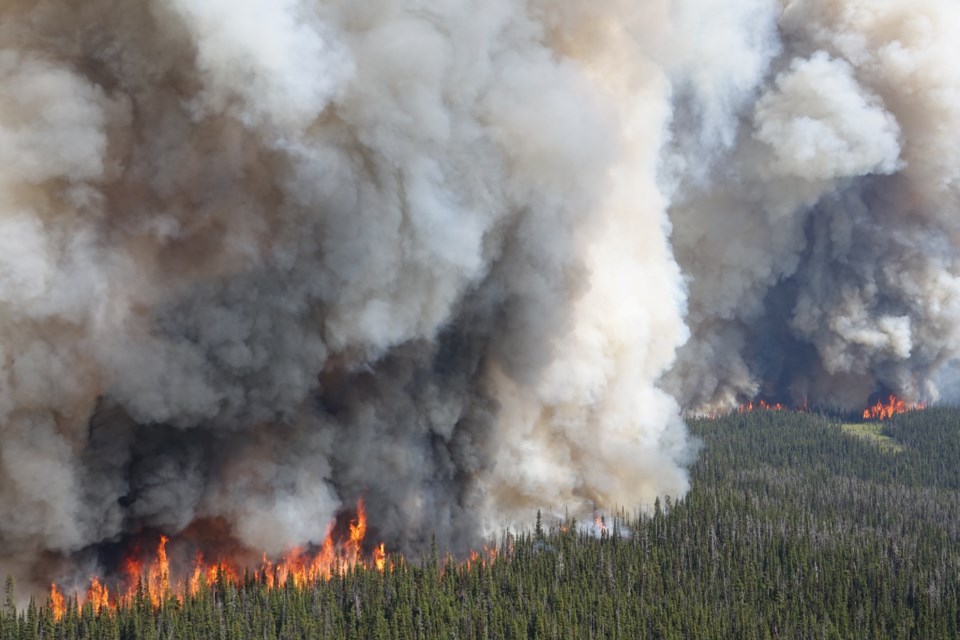BC Wildfire Service is currently facing challenges in the Nadina, Bulkley-Nechako, Fort St. James and Vanderhoof regions, which have been the hardest-hit areas over the last couple of days.
“Obviously, the situation across the province but primarily in the central and northern part of the province over the past couple days has been significant,” said Cliff Chapman, BCWS director of operations.
There have been over 1,000 fires that have started since April in B.C. and 400 of those fires are currently burning.
Just over 1.2 million hectares have burned so far this year in B.C., a shocking amount considering the 10-year annual average is roughly 76,000 hectares.
“The fire conditions we are faced with in the northern half of the province and starting to see in the south are extreme,” he said.
“In both of these areas we have seen lightning develop each day and start new fires were we already have fires on the landscape.”
Furthermore, over the course of the next 10 days there will not be a significant break in the weather, and despite some scattered showers in the forecast Chapman said it will not be enough to impact the fires.
“We have had 392 fires in the last seven days, 230 of those fires remain out of control and many of those fires are present in the [Northwest and Prince George Fire Centres].”
He reiterated that the BCWS first priority is public safety and that is about keeping critical transportation corridors open, and supporting First Nation communities and local communities in terms of potential impacts.
Vanderhoof and Fort St. James
Todd Flannigan, the incident commander for Vanderhoof and Fort St. James Fire Zone, said there have been 54 new wildfires since July, with 63 fires in the zone burning and the majority of those are out of control.
“Aggressive fire behaviour and heavy smoke is expected to continue through the next several days. At this time our main objective is to keep transportation corridors open to support access to support fire operation and all evacuation routes.”
In the Vanderhoof zone specifically, there are 36 active wildfire and 2,500 hectares currently burning, whereas the in the Fort St. James zone there are 27 active wildfires and 3,500 hectares actively burning.
Northwest
Ryan Chapman, deputy fire centre manager in Smithers, said there has been 159 wildfires reported in the northwest fire centre this season which is significantly above the 10-year average where they would typically only have 47 at this time.
“What is most notable is that 64 of those wildfires were reported in the three-day period between July 7- 9,” said Chapman.
He said a small success in this very difficult situation is that 24 of those new fires are either being held, under control, or out.
There are 92 active fires in the northwest and they are focusing the majority of their resources on the highest priority ones like the Tintagel Fire.
“We are going close where we can. We are building contingency guards. We are prioritizing protecting life and property, but we are still trying to get a handle on getting around these fires in their entirely. We know that resource values in the area are important as well.”
He also urged anyone who is going into the backcountry to be careful know where the fires are because there are multiple significant fires all over the landscape.
“We are expecting to keep finding new fires, and trying to clear those up as we can while they are small, but we are expecting these fires to grow.”



